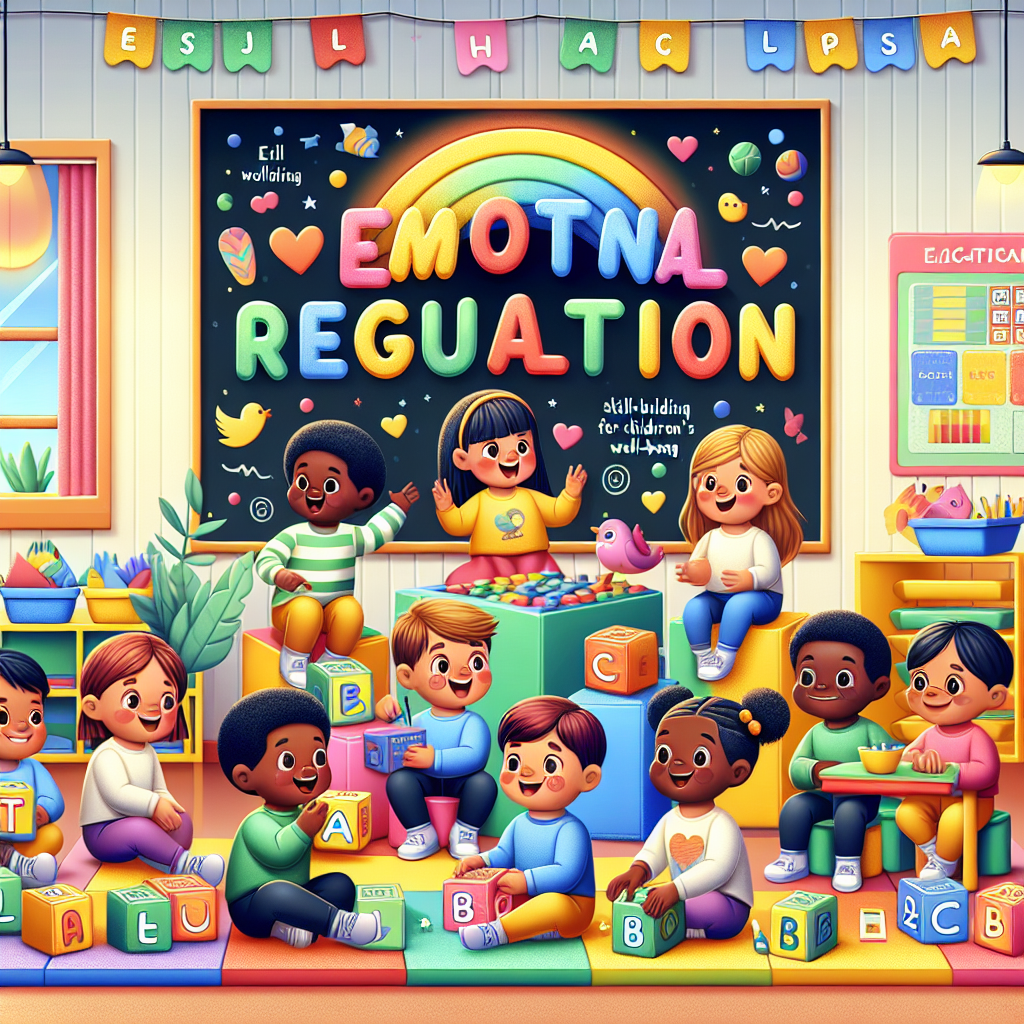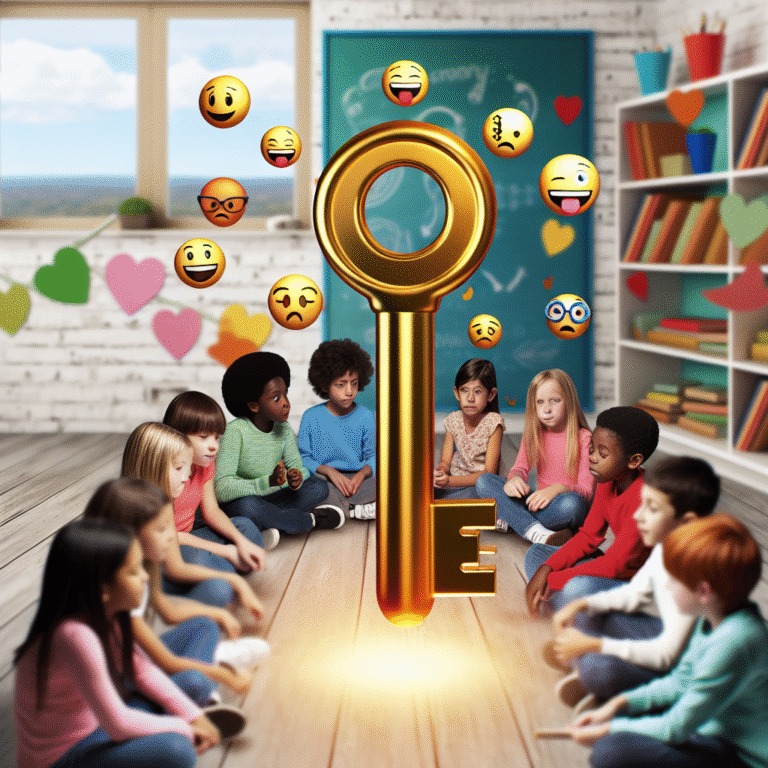
The Ultimate Guide: The ABCs of Emotional Regulation – Skill-Building for Children’s Well-Being
Introduction
Imagine a world where children can cope with their feelings, express themselves positively, and interact with others harmoniously. A world where emotional literacy is as valued as academic achievement. This dream can become a reality through effective emotional regulation skills. In this article, we unravel The ABCs of Emotional Regulation: Skill-Building for Children’s Well-Being, a crucial framework designed to empower children with the tools necessary for lifelong emotional health and resilience.
In our fast-paced world, ensuring the emotional well-being of our children has never been more vital. Research shows that emotional regulation is linked to improved academic performance, better relationships, and enhanced mental health. By cultivating these skills early on, we can lay the groundwork for a generation of emotionally intelligent individuals. Let’s explore how we can accomplish this.
Understanding Emotional Regulation
Emotional regulation refers to the ability to manage and respond to one’s emotional experiences effectively. It involves recognizing an emotion, understanding its cause, expressing it appropriately, and employing strategies to manage it. Emotional regulation plays a pivotal role in children’s development, influencing their social skills, decision-making processes, and overall emotional health.
The Importance of Emotional Regulation in Childhood
- Improved Academic Performance: Numerous studies highlight a correlation between emotional regulation and academic success. Children who can manage their emotions often perform better in school.
- Stronger Relationships: Emotionally regulated children are better equipped to navigate social challenges. They can build and maintain relationships, exhibit empathy, and handle conflicts peacefully.
- Enhanced Mental Health: Learning to regulate emotions can mitigate risks of anxiety and depression in children, providing them with effective coping mechanisms for life’s challenges.
The ABCs of Emotional Regulation: What Are They?
When we discuss The ABCs of Emotional Regulation: Skill-Building for Children’s Well-Being, we refer to a simple yet powerful framework:
- A: Awareness – Recognizing and understanding emotions
- B: Balance – Managing and expressing emotions in a healthy way
- C: Coping Strategies – Employing techniques to handle emotional distress
A: Awareness
The first step in emotional regulation is awareness. Children must learn to identify their emotions and understand what triggers them. Awareness encourages mindfulness and introspection.
Case Study: Teaching Awareness through Journaling
In a school-based program, students were introduced to journaling as a way to express their feelings. Teachers guided them to write about daily events, focusing on their emotions associated with these events. Over the course of several weeks, kids reported a greater awareness of their feelings and could articulate their emotional responses more effectively.
Analysis: This case illustrates that journaling can bolster emotional awareness among children. By articulating their feelings, children learn to recognize emotional patterns, an essential step toward self-regulation.
B: Balance
Balance is about finding harmony in expressing and regulating one’s emotions. It’s important for children to learn that emotions are natural but require appropriate channels for expression.
Techniques for Achieving Balance
- Modeling Emotional Expression: Parents and educators should demonstrate healthy emotional expression. Verbalizing feelings and coping mechanisms teaches children what balance looks like in real life.
- Emotion Vocabulary: Expanding a child’s emotional vocabulary equips them to express what they feel. Tools like emotion charts can be effective in this endeavor.
Table 1: Examples of Emotional Vocabulary
| Basic Emotion | Advanced Emotion |
|---|---|
| Happy | Joyful |
| Sad | Disheartened |
| Angry | Frustrated |
| Scared | Alarmed |
| Confused | Disoriented |
C: Coping Strategies
Coping strategies are essential tools that help children deal with immediate emotional distress and stressors effectively.
Effective Coping Strategies
- Deep Breathing Exercises: Teaching children to take slow, deep breaths can help calm their bodies and minds in stressful situations.
- Positive Self-Talk: Encouraging children to replace negative self-talk with positive affirmations fosters confidence and resilience.
- Creative Outlet: Art, music, and sports provide constructive avenues for children to express their emotions.
Case Study: Implementing Coping Strategies
A community center rolled out a program where children engaged in different activities, such as art therapy and yoga, focused on emotional regulation. After eight weeks, participants exhibited reduced anxiety and improved coping skills.
Analysis: The success of this program underscores the importance of diverse coping strategies in cultivating emotional regulation. By involving creative outlets, children learn not only to express themselves but also to manage their stress effectively.
Building Emotional Regulation Skills at Home
Parents play a vital role in their children’s emotional development. Here are some practical strategies for building emotional regulation skills at home:
1. Encourage Open Communication
Create an environment where children feel safe to express their emotions. Use open-ended questions to encourage dialogue about their feelings and experiences.
2. Practice Reflective Listening
When your child expresses their emotions, practice reflective listening—repeat back what you hear to ensure understanding. This practice validates their feelings and reinforces their emotional awareness.
3. Model Healthy Coping
Children learn by watching their parents. Use momentary challenges to model healthy coping strategies. Express how you feel during stressful situations, and articulate the strategies you use to feel better.
The Role of Schools in Promoting Emotional Regulation
Schools are instrumental in providing children with the tools they need for emotional regulation. Here are some strategies educators can use:
1. Integrating SEL Programs
Social-emotional learning (SEL) programs explicitly teach emotional regulation, building awareness, balance, and coping strategies directly into the curriculum.
2. Creating a Safe Learning Environment
A positive classroom culture fosters emotional well-being. Establish norms that promote respect, kindness, and open communication.
3. Training for Educators
Continuous professional development in emotional regulation techniques equips educators to better support their students’ emotional needs.
Conclusion
In summary, The ABCs of Emotional Regulation: Skill-Building for Children’s Well-Being is a foundational framework that can transform the emotional landscape of our children. By fostering awareness, balance, and effective coping strategies, we equip the next generation with tools that will serve them for a lifetime.
As we embrace the importance of emotional regulation, let us take actionable steps to cultivate these skills in our homes and schools. Together, we can inspire children to thrive emotionally, forge robust relationships, and navigate life’s challenges with confidence.
FAQs
1. What age should children start learning emotional regulation skills?
Children as young as three can start learning basic emotional regulation skills using simple techniques like identifying feelings and practicing deep breathing exercises.
2. How can I help my child express their emotions better?
Encourage open dialogues, utilize emotion charts, and model emotional expression yourself to create a supportive environment for sharing feelings.
3. Are there any signs that my child struggles with emotional regulation?
Signs can include frequent outbursts, trouble managing frustration, or avoidance of social situations. Observing their interactions with peers can provide insights.
4. What if my child reacts emotionally during stressful situations?
Teach them coping strategies like deep breathing or counting to ten and validate their feelings during the process. Support their efforts in using these strategies.
5. Can schools help with emotional regulation?
Absolutely! Schools can implement SEL programs, promote a positive environment, and train teachers in emotional regulation strategies to support students’ emotional development.
By empowering our children with the skills outlined in The ABCs of Emotional Regulation: Skill-Building for Children’s Well-Being, we are not just nurturing their emotional intelligence but are also paving the way for their success in all areas of life.

















